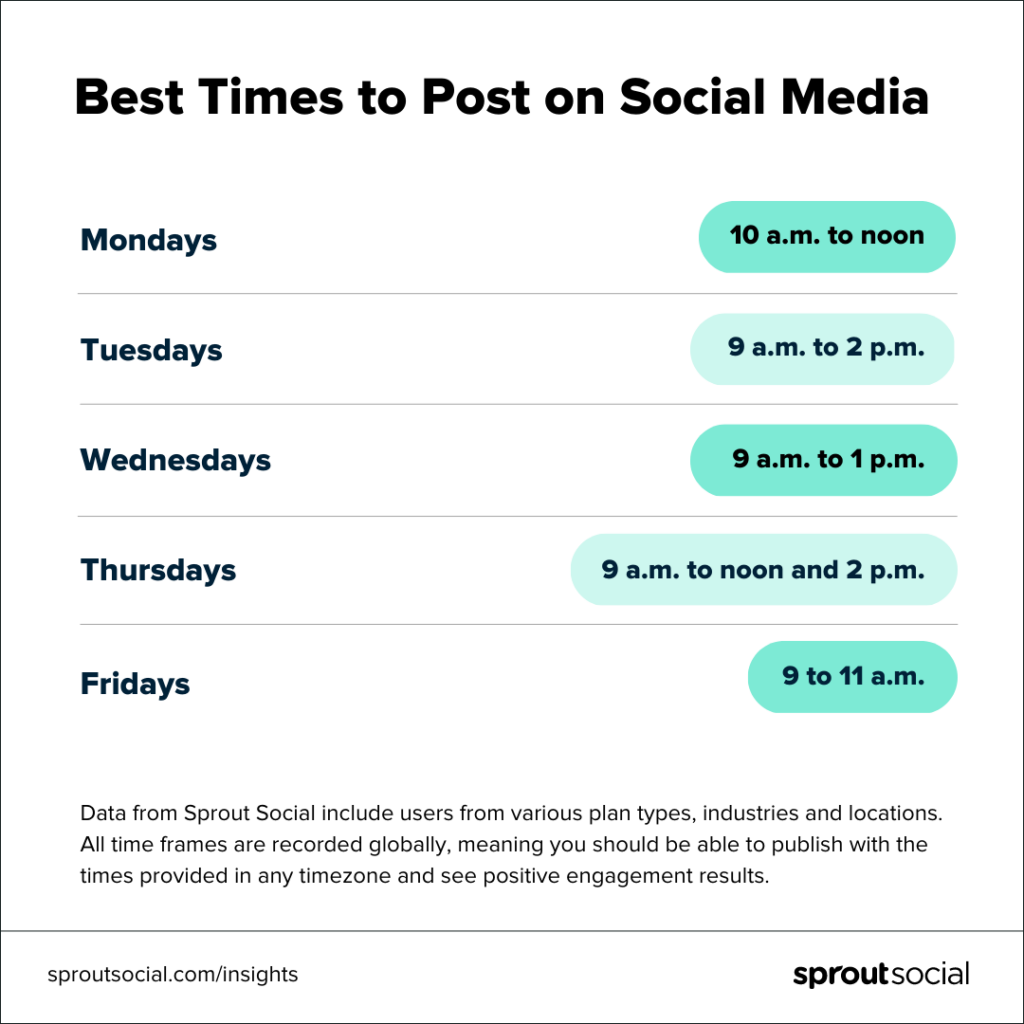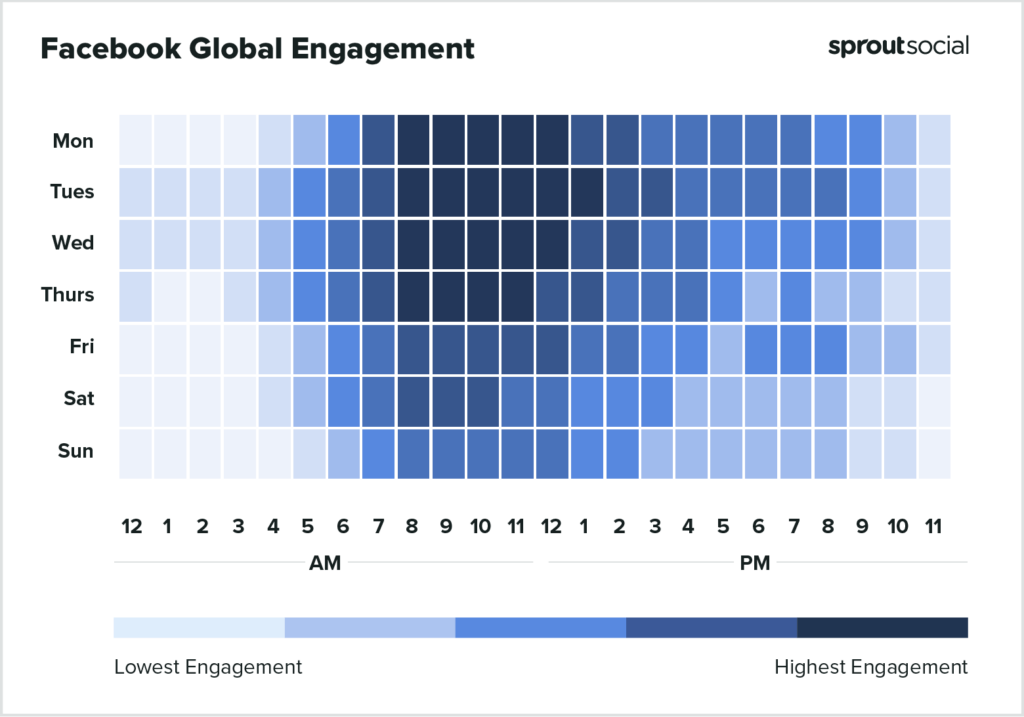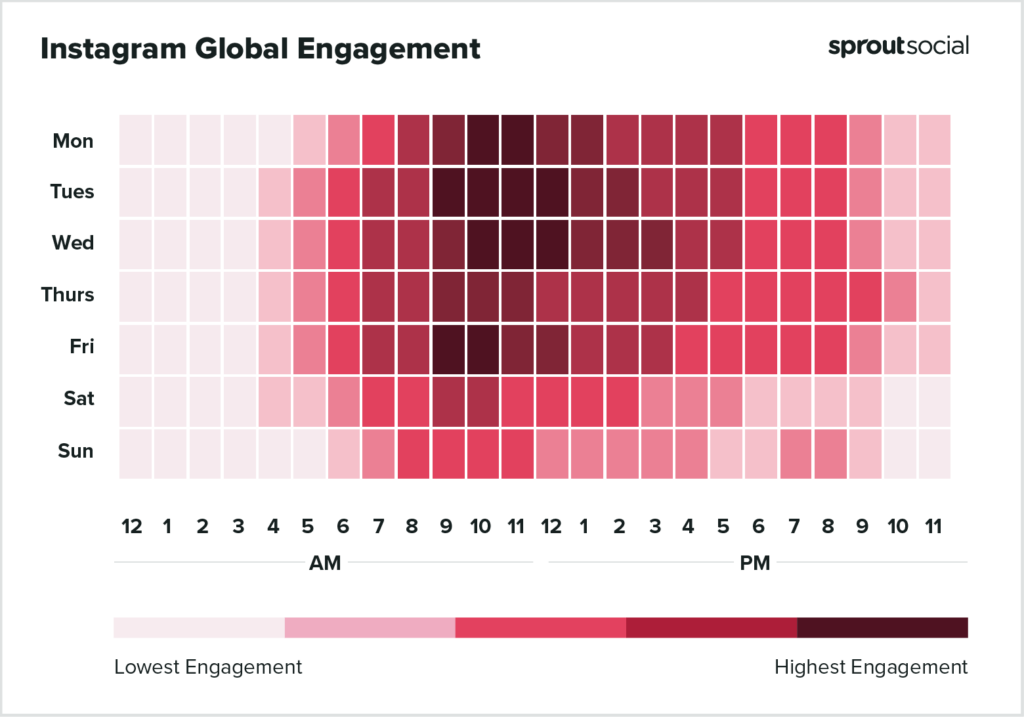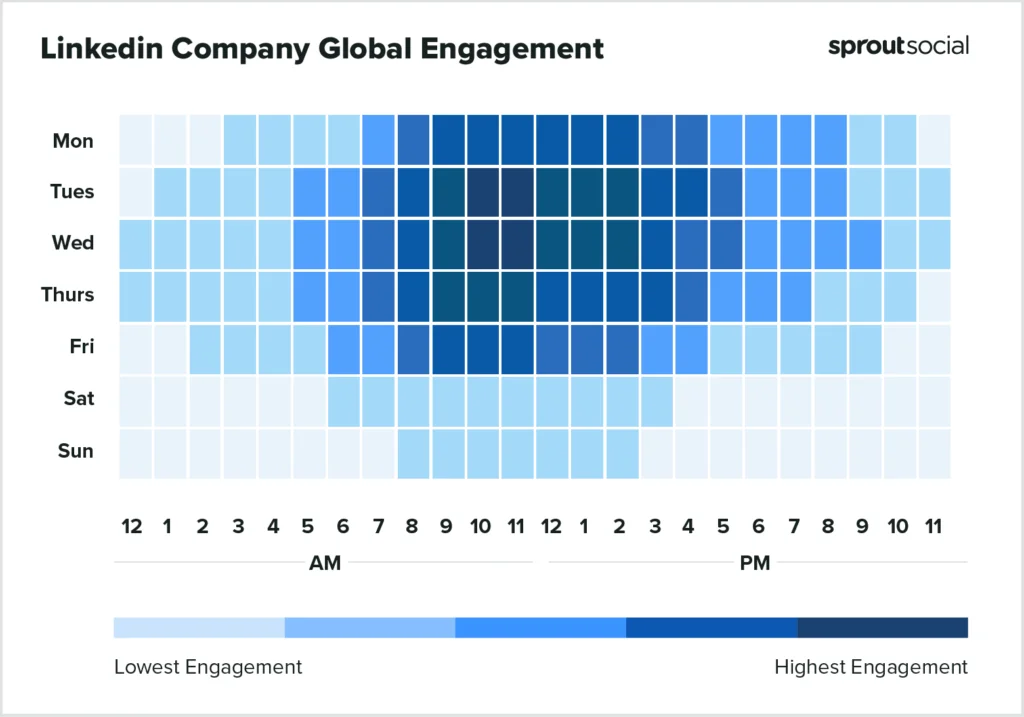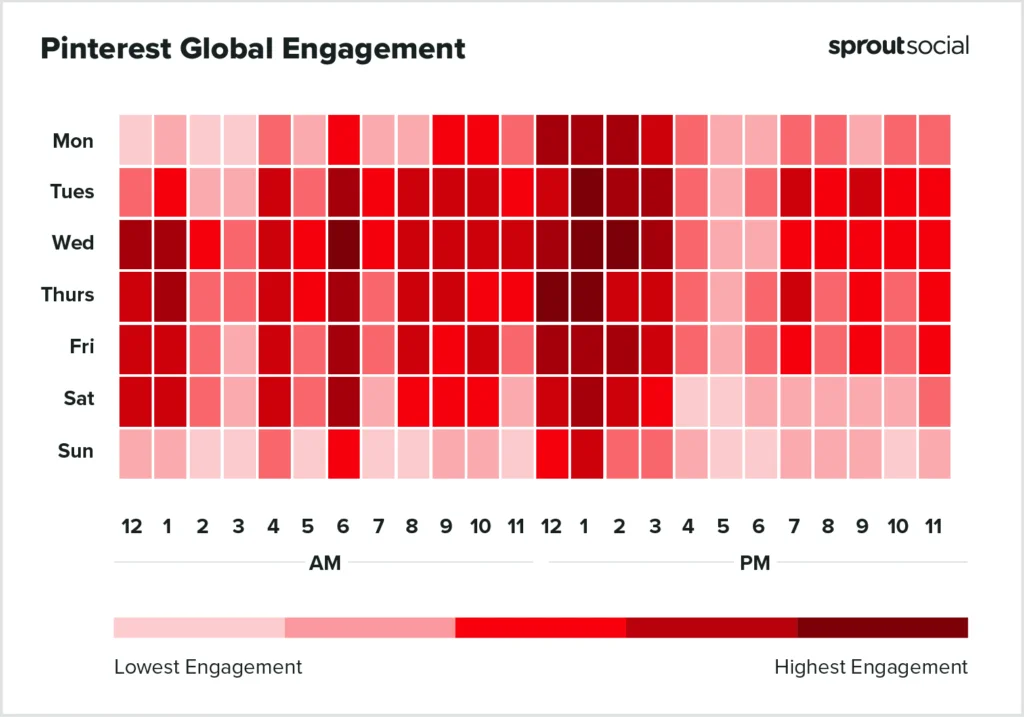Content
1. So, When is The Best Time to Post a Blog?
2. Best Time to Publish a Blog Post: 4 Things to Consider
3. Best Time of Day to Post on Social Media Overall
4. Best Day and Time to Post on Facebook
5. Instagram Prime Posting Time
6. Best Time to Post on Other Social Media
7. How Often Should You Post a Blog on Your Website or Social Media

Vlad Yudkin
March 13, 2024
Best Times to Post on Social Media: A Complete Guide
The timing of your blog posts and social media updates can significantly impact their reach and engagement. Crafting compelling content is undeniably crucial but presenting it to your audience at the right moment can make all the difference.
In this article, we delve into the intricate art and science of timing, exploring the factors that influence when your audience is most receptive. We'll guide you through the process of pinpointing the optimal moments to share your content for maximum impact.
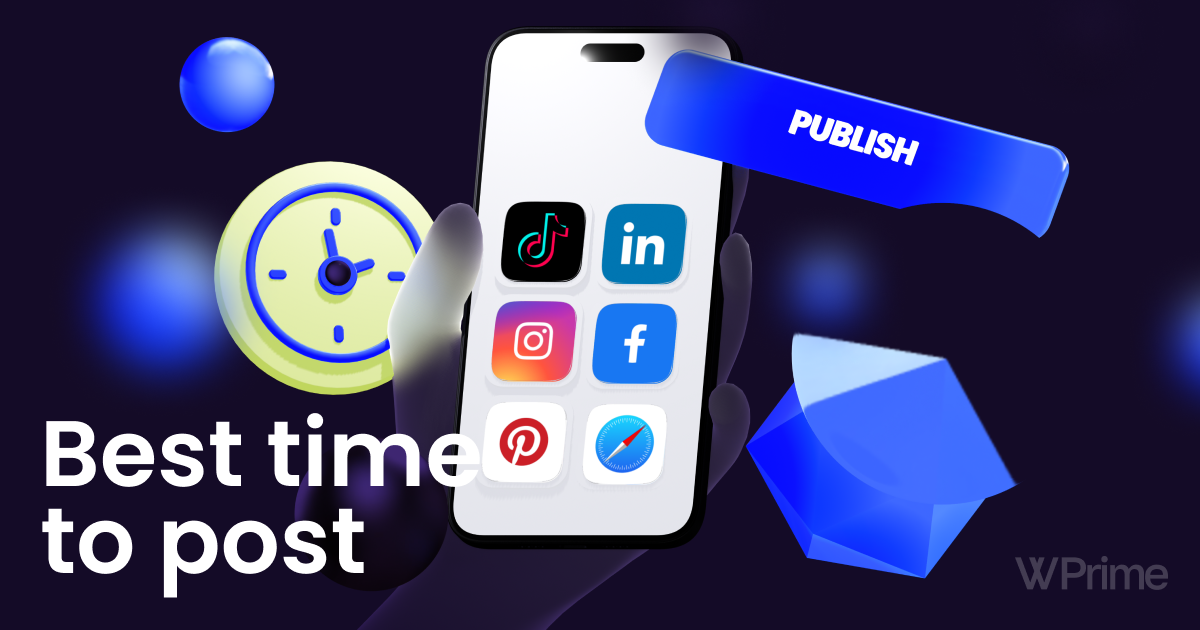
So, When is The Best Time to Post a Blog?
The frequency of your blog posts depends on various factors, including your goals, resources, and the preferences of your target audience.
he optimal frequency for blog posts varies depending on specific goals, with brand awareness, click-through rate (CTR), and the prioritization of quality over quantity playing crucial roles. For those aiming to bolster brand awareness, a measured and less frequent publishing schedule might be beneficial. This allows for more thoughtful and impactful content that can resonate with the audience, fostering a lasting impression and solidifying the brand in the minds of readers.
Conversely, if the primary goal is to boost the click-through rate, a more frequent publication strategy may be necessary. Regular updates and a dynamic posting schedule can entice the audience to engage consistently, increasing the likelihood of click-throughs. However, in the pursuit of heightened CTR, it remains imperative to strike a balance between quantity and quality. Ensuring that each post is compelling and valuable to the audience should take precedence over sheer volume to maintain sustained interest and trust.
The overarching principle is to publish as frequently as possible without compromising quality. Search engines favor regularly updated posts, but the importance of delivering substance over sheer quantity cannot be overstated. Achieving the right balance ensures that every post contributes meaningfully to your blog.

Best Time to Publish a Blog Post: 4 Things to Consider
Before selecting the best times to post, it's crucial to take a few factors into account. Let's explore some considerations.
1. Define your goal
Selecting the optimal time to post blogs is a strategic decision that hinges on the overarching goals of each post and the intricacies of a well-defined content strategy. Before determining the ideal timing, it is crucial to establish the specific objectives of the post, whether it be increasing engagement, imroving marketing strategy, driving traffic, or promoting a product or service. Aligning the timing with the post's purpose ensures that it reaches the target audience when they are most receptive, maximizing the impact of the blog.
A thoughtful content strategy plays a pivotal role in the timing of blog posts. Consider the nature of your audience—when are they most active, and what time zones do they inhabit? Tailoring the posting schedule to accommodate peak periods of online activity can enhance visibility and engagement. Additionally, integrating timely and relevant posts into your strategy ensures that the blog posts remain pertinent, further capturing the attention of your audience.
After identifying the goals and honing the content strategy, the next step involves experimentation with the timing of blog publication. Publishing your content on different days allows for a nuanced understanding of when your audience is most responsive. Utilize analytics tools such as Google Analytics to track the performance of new posts at various time slots, assessing metrics such as engagement (likes, comments), click-through rates, and social shares. This iterative approach empowers you to refine your posting schedule, ultimately optimizing the timing of your blogs for maximum reach and resonance with your audience.
2. Audience infographics
Determining best time to posts blogs hinges significantly on understanding your target audience's demographics. Recognizing that the optimal posting time varies according to who you're trying to reach is crucial. You should consider using Google Analytics or Facebook Insights. These tools can provide information about your audience. MonsterInsights is a great plugin for Google Analytics. You can find it here.
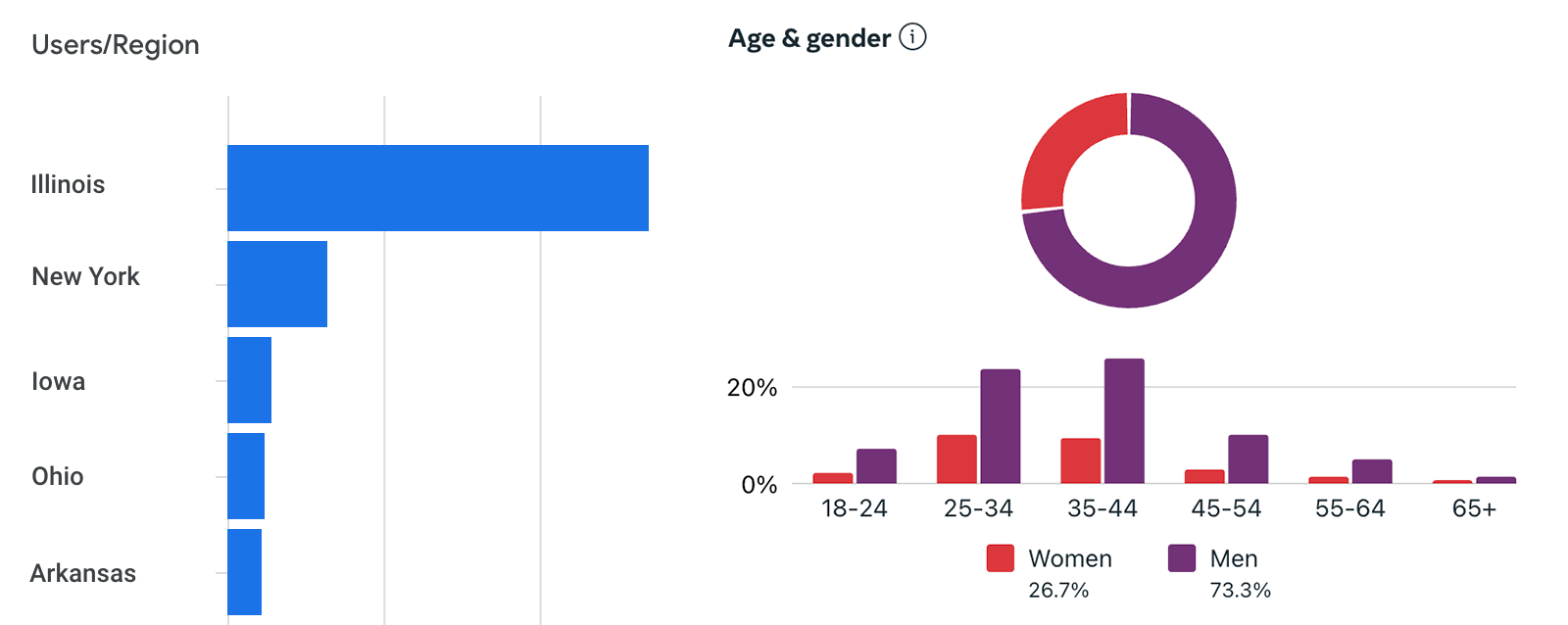
For instance, a blog aimed at students might see better engagement in the evening or late at night when they are more active online. On the other hand, a blog catering to professionals may perform better during work hours when they are likely to take breaks.
Considering time zones is paramount, especially when targeting a diverse audience, such as users in the United States. When you expand your focus to include both the Eastern and Central Time Zone, these regions collectively encompass a substantial 80% of the U.S. population. Given this significant concentration, prioritizing these time zones in your content delivery strategy can be a good move.
Moreover, researching your target audience's occupations provides valuable insights into their daily routines. Understanding when they are most likely to be online during work breaks or after work hours can guide you in selecting the prime time for blog posts. This consideration is crucial in tailoring your information delivery to align with the habits and behaviors of your specific audience.
3. Quality vs. Quantity
When it comes to crafting posts and blogs for online platforms or your site, the age-old debate of quality versus quantity holds significant weight. The cardinal principle remains clear – quality must always surpass quantity. A single, well-crafted piece that resonates with your audience is often more impactful than a couple of hastily produced, mediocre posts.
Before increasing posting frequency, it's imperative to conduct an introspective assessment. Deciding whether you can sustain the caliber of the blog that aligns with your brand or message with an increased posting frequency is key. Rushing through content creation and creating not valuable news to meet arbitrary posting quotas can compromise the very essence of your message and erode the trust your audience places in your expertise.
If maintaining quality becomes a challenge with an elevated posting frequency, it's advisable to reassess your strategy. Instead of diluting your content with quantity, focus on striking a balance that allows you to post as frequently as possible without compromising the integrity and excellence of your work. Consistency is vital, but it should not come at the expense of the quality that defines your brand.
4. Competition
When choosing the optimal time to post, navigating the landscape of competition plays a pivotal role in maximizing the impact of your content. One approach involves targeting peak activity hours when online traffic is at its zenith. By publishing during these periods, you aim to reach a vast audience actively scrolling through their feeds. This strategy, however, comes with its pros and cons. While the potential for broader visibility is high, the sheer competition during these peak hours might make it challenging for your content to stand out amidst the deluge.
On the flip side, strategically posting during low activity hours offers a different set of advantages and challenges. During these times, although your potential audience may be smaller, there exists a unique opportunity to capture a higher percentage of engagement. With fewer information in the mix, your posts are more likely to be noticed and interacted with by those online. Nevertheless, the drawback lies in the limited pool of potential viewers, which might constrain the overall reach of your message.
Identifying both peak and low activity hours specific to your industry is a critical step in this decision-making process. Conducting thorough research to understand the periods when your target audience is most active enables you to tailor your posting schedule accordingly. Furthermore, studying the posting habits of your direct competitors can provide valuable insights. Analyzing when competitors post, and the level of engagement they receive, aids in refining your strategy, allowing you to carve out a niche or optimize your approach during times of lower competition.
Best Time of Day to Post on Social Media Overall
We've explored the factors to consider when picking the best time to publish content of different types. Now, let's delve deeper into the numerical insights and research findings provided by various resources.
Information gathered from Sprout Social encompasses users from diverse plan types, industries, and locations. Now, let's examine the comprehensive data regarding the most favorable timings for posting each day.
According to this research, we can find out when is the best time of day to post on social media.
- Mondays from 10 a.m. to noon: Starting the week with mid-morning to lunchtime posts can catch people during work breaks or as they settle into their day.
- Tuesdays from 9 a.m. to 2 p.m.: Tuesday mornings into early afternoon offers a broad window for engagement, capturing attention during the active phase of the day. This is one of the best times to upload engaging interactions.
- Wednesdays from 9 a.m. to 1 p.m.: Midweek mornings to early afternoon continue to be optimal, providing a consistent timeframe for audience interaction.
- Thursdays 9 a.m. to noon: Late mornings on Thursdays create another sweet spot, with people likely more engaged before heading into the weekend.
- Fridays from 9 to 11 a.m.: The end of the workweek is still active, making late morning posts on Fridays a good opportunity for visibility.
From this data we can conclude that the best days to post on social media are Tuesdays and Wednesdays. These midweek days consistently offer favorable time frames, maximizing the chances of reaching a broader audience.
It appears that the worst days would be Sundays.
The weekend wind-down may lead to lower social media activity on Sundays, making it a less favorable day for posting when aiming for optimal engagement. People are frequently away during weekends or dedicating time to their families, which could result in reduced phone usage.
Best Day and Time to Post on Facebook
If your main focus is of Facebook, here is some data:
It appears that the best days to post on FB are Mondays through Thursdays. The optimal timeframe would begin at 8 a.m. and continue until 2 p.m.
Instagram Prime Posting Time
According to Sprout Social popular posting times on Instagram typically include Mondays, Tuesdays, Wednesdays, and Fridays, falling between 9 a.m. and 1 p.m.
Best Time to Post on Other Social Media
LinkedIn engagement tends to align with standard business hours, with peak activity concentrated during the midday period and not extending significantly beyond typical work hours. The most opportune time for optimal engagement on LinkedIn would fall between 10 a.m. and noon, particularly on Tuesdays and Wednesdays.
Pinterest users engage with content throughout the day, virtually every day of the week. Optimal posting times on Pinterest are observed on Tuesdays, Wednesdays, and Thursdays, typically around 1 p.m., with flexibility to extend an hour before or after. Wednesdays at 6 a.m. also emerge as a noteworthy peak time for posting on Pinterest.
How Often Should You Post a Blog on Your Website or Social Media
The frequency of posting blogs on your website or social media depends on various factors, including your goals, audience preferences, and available resources. Here are some considerations:
- Quality Over Quantity. Prioritize the quality of your blog. Posting a high-quality, valuable blog is more important than posting frequently with lower-quality information.
- Audience Engagement. Consider the engagement patterns of your audience. Some audiences may prefer more frequent updates, while others may appreciate less frequent but in-depth information. Pay attention to analytics and feedback to understand what works best for your audience.
- Blog Consistency. Establish a consistent posting schedule. Whether it's daily, weekly, or bi-weekly, maintaining a regular schedule helps set expectations for your audience and builds trust.
- Blog Relevance. Ensure that your information remains relevant and valuable to your audience. Don't sacrifice quality for quantity; instead, aim for a balance that keeps your audience engaged and interested.
- SEO Benefits. Regularly updating your website with fresh content can have SEO benefits. Search engines often favor websites that frequently update their blog. However, prioritize quality to maintain credibility and user satisfaction.
- Resource Constraints. Consider the resources at your disposal. If you have the capacity to create high-quality content frequently, you might opt for a more frequent posting schedule. However, if resources are limited, focus on delivering impactful content within your means.
When delving into a complex niche that requires substantial research efforts, it is advisable to prioritize quality over quantity. Strive for a publication frequency of 2-4 posts per month, centering each piece around highly pertinent topic clusters. Coupled with a robust distribution plan, this approach ensures that each blog post is thoroughly researched, relevant, and effectively reaches your target audience.
If your blog is less than a year old, and you want to increase SEO performance, target a monthly publication range of 6–8. Focus on pivotal and promising topics that align with your brand's identity. This strategy aims to establish a robust content foundation, enhancing your blog's relevance and resonance in its early stages.
Conclusion
In the intricate dance of online content, the significance of selecting the optimal time to publish your blog on your website or social media cannot be overstated for blogging. This decision is a delicate interplay of your goals, understanding your audience dynamics, evaluating competition, and striking the delicate balance between quality and quantity. The diverse nature of various platforms adds an additional layer of complexity, necessitating a nuanced approach tailored to each one.
As you navigate this multifaceted landscape, keep in mind that the right timing can transform your blog from mere words into a resonant message that captivates your audience. Whether it's about maximizing reach, enhancing engagement, or establishing thought leadership, the strategic selection of posting times becomes a linchpin in the success of your digital presence. By continuously refining your timing strategy based on these considerations, you not only optimize your blog's performance but also foster a deeper connection with your audience in the ever-evolving world of online content.
Faq
What is the best time to post on TikTok?
The optimal times to post on TikTok for maximum engagement are generally considered to be between 10 to 11:50 am, 2:30 to 4 pm, and 6:30 to 9:30 pm. These recommended time slots are typically advised for posting content on TikTok, with a focus on weekdays, particularly between Tuesdays and Thursdays. It's important to note that these time frames are based on trends and observations, and individual audience behaviors may vary. Testing and analyzing your specific audience's response to posting times can help refine the most effective posting schedule for your TikTok content.





